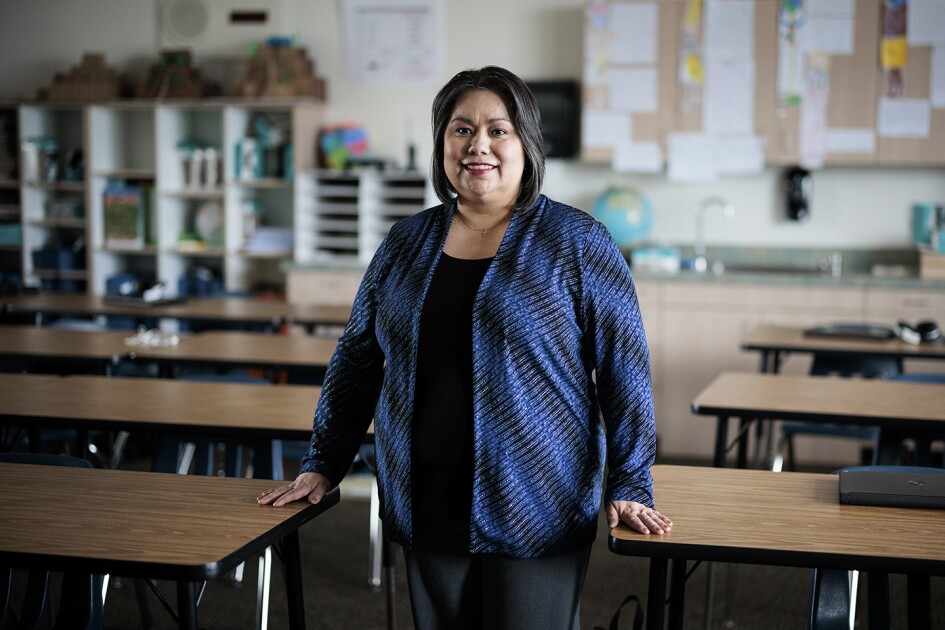To find out what America’s children are really eating at school, just ask the people who serve it to them.
A new survey of school food-service workers, conducted by the American Federation of Teachers, shows that when given the choice, students—not surprisingly—are selecting menu items high in fat and sugar over fruits, vegetables, and other healthy foods. More than 50 percent of the 226 cafeteria employees surveyed said children were making those selections.
Read the related story,
British Celebrity Chef Petitions His Country For Better School Food
And almost 60 percent of those surveyed, including food preparers, cashiers, and managers, reported that prepackaged snacks, such as chips, cookies, and crackers, as well as soda, are being sold in their schools, in spite of legislative action and other moves by policymakers to ban or curtail junk food at school to help prevent childhood obesity.
“We have a very sweet breakfast—milk, cereal, juice. That’s high in sugar,” said Mattie Wright, a cook and a cashier at Madison County Central School, a 1,500-student pre-K through grade 8 school in Madison, Fla. “Therefore, the children are bouncing off the walls by the time they go into the classroom.”
Ms. Wright said she would rather see fresh fruit at breakfast than sugary cereal and juice.
The employees surveyed are among the roughly 300,000 members of the Paraprofessional and School-Related Personnel division of the AFT. Those school workers gathered in Anaheim, Calif., this month for their annual conference.
‘People on the Line’
Conducted between mid-February and mid-March, the survey is part of a new strategy by the 1.3 million-member AFT to poll support-staff workers on school-related issues.
“This group of people tends to be invisible,” said Jamie Horwitz, a spokesman for the union. “No one asks them what they think.”
Next year, he said, the union might survey school bus drivers or janitors. And in five years, he added, food-service workers might be surveyed again to see if students’ eating habits have changed.
“This is a great window. This is the first time I’ve heard of talking to people on the line,” said Julia G. Lear, the director of the Center for Health and Health Care in Schools at George Washington University in Washington. “Would you talk about crime without talking to police officers?”
School cafeteria employees, she added, should be consulted on such issues as what students are eating and how to prepare and present food to make it more attractive.
More than half the workers surveyed said the most popular food served at their schools is pizza. The second most popular offering is chicken nuggets, with 17.3 percent of the respondents saying that was the children’s favorite.
Vegetables and fish dishes ranked as the least popular items, according to the survey.
At the same time, however, a large majority of the workers—almost 72 percent—said they felt their schools were already doing enough to fight childhood obesity.
Ms. Wright said her school was having some luck with offering raw vegetables, such as bell peppers and celery, with cheese or dressing for spreading or dipping.
Steven Brinkley, the food-service manager at the 800-student Roosevelt Middle School in Philadelphia, added that all cafeteria employees, regardless of their positions, should be trained in nutrition.
Roughly one-fourth of the food-service workers also noted that they often witness students not eating at all, because they either don’t qualify for subsidized meals or because they don’t have enough money to buy lunch. The highest percentage of workers who said children are hungry at lunch time—35.4 percent—work in suburban schools.
In addition to conducting the survey, the AFT held focus groups with PSRP members on the same topics, Mr. Horwitz said, adding that some guidelines also bother them.
For example, Ms. Wright said children are required to choose three different items, even if they would rather have three of the same thing.
“Two of them end up in the trash,” she said. “That is a big waste for us.”







